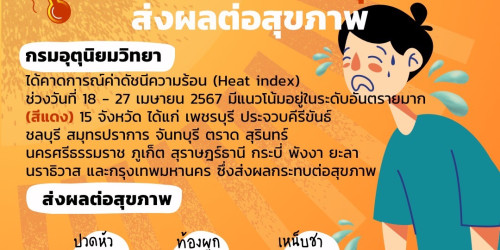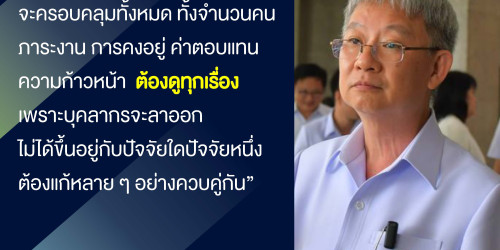As Asean borders open up in 2015, medical professionals, patients and private operators alike are expected to rethink their positions.
Concerns are mounting that doctor shortages in Thailand will intensify with the launch of the Asean Community (AC) looming on Dec 31, 2015."A significant challenge for Thailand's healthcare sector amid the regional integration could be a drastic shortfall in medical human resources and professionals," Private Hospital Association president Chalerm Harnphanich said.
Dr Chalerm anticipates there will not be enough physicians to provide medical cover not only for the 67 million Thai nationals but also more than 3 million foreigners, including migrant workers and tourists, expected to be in the country when the AC launches in 2015.
According to the Public Health Ministry, Thailand has 43,424 physicians working in public and private hospitals nationwide. To provide high-quality medical services, that figure needs to be doubled, the ministry says.
The 2011 World Health Statistics report of the World Health Organisation showed that in Thailand, there are just three physicians for every 10,000 patients, compared to 18.3 in Singapore, 9.4 in Malaysia, 11.5 in the Philippines and 12.2 in Vietnam.
In Norway, the United Kingdom and the US, the ratios are 42, 27 and 24, respectively.
A recent survey by the Medical Council found that 18 medical schools across the country could produce only 2,500 doctors a year.
"Thailand needs to drastically ramp up its training of physicians," Dr Chalerm said.
"The government and private sec to r should also designate Thailand as a medical education hub for Southeast Asia and interest students from neighbouring countries who want to become doctors to study at medical schools in Thailand."
To enhance the country's competitive edge under the AC, the government should amend laws, such as the Hospital Act and the National Health Act, which bloc k the capacity of private hospitals to compete, he added.
However, Dr Chalerm said he believes the AC offers greater opportunity than risk once it is fully implemented.
"The opportunities are immense for healthcare providers," he said.
" We may not well compete with Singapore and Malaysia, which are developed and expanded, but we're much more competitive in CLMV [Cambodia, Laos, Myanmar and Vietnam]."
Healthcare is one of the four priority sectors (along with tourism, telecommunications and aviation) identified by Asean leaders as industr ies than can help drive regional integration, with Asean investors able to hold up to 70% in any such business.
Thai private hospitals are said to be better prepared than most businesses for the AC because healthcare is already an international business here.
With today's ease of travel, many patients travel to seeking good quality healthcare at a lower cost. Countries such as Singapore and Thailand have been at the forefront of the medical tourism movement for years.
"The impact of the AC on the healthcare industry is varied, and the readiness of Thai hospitals for the AC is also varied," said John Lee Kohshun, managing director and principal consultant of Singapore-based MuziHealth Consulting Pte Ltd.
"I expect that the first impact will be the liberalisation of cross-border investment in healthcare, easing of foreign exchange controls and lifting the upper limit of foreign ownership of healthcare companies," he said.
"However, this is in fact already taking place, as we have seen recently when KPJ Healthcare invested in Vejthani [hospital]. I expect the foreign shareholders of the BDMS [hospital group] and Bumrungrad [hospital] will increase."
He also predicts cross-border acquisition of controlling shareholding, such as when Charoen Sirivadhanabhakdi took over F&N in Singapore and Khazanah National (Malaysia Sovereign Fund) privatised Parkway Holding (Singapore) in 2010.
Eventually IHH Healthc are was formed and listed in Kuala Lumpur, with secondary listing in Singapore.
Mr Lee Kohshun cited the recent joint venture between Malaysia's Sime Darby and Australia' s Ramsay as another example of two companies with complementary resources joining efforts to expand in the Southeast Asian region.
"I expect the Ramsay-Sime Darby Healthcare Sdn Bhd will continue to grow through acquisition and eventually be listed in one of the stock exchanges of the Southeast Asian region," he said.
Return on investment in the healthcare industry in the Southeast Asian region has been more than meaningful, Mr Lee Kohshun said.
Many investors have reaped huge profits or ar e sitting on vast capital gains, he said, predicting this will further stimulate investment in healthcare in Southeast Asia.
However, he noted cross-border investment or ownership of hospitals will bring about internationalisation of governance and management.
This will be in the form of placement of foreigners in Thai companies , such as how KPJ has representatives on the Vejthani board. Their e will also be a standardisation of practice of governance and management, he said.
Currently, many hospitals are governed and managed almost as family businesses, or are governed by old friendships. Better corporate governance will be required.
"From my experience in Thailand, not many Thai hospital companies are ready for the impact of the AC," said a former executive vice-president of Bangkok Dusit Medical Services (BGH), Thailand's largest hospital group, who did not wish to be named.
"Instead, man y of these hospital companies are asking me how to b e 'defensive'. Unless controller shareholders have a lot of capital, it will be quite difficult to 'defend' against foreign investors and the practice of governance and management that comes with it.
"Instead, my recommendation to Thai hospital companies has always been 'offence if the best form of defence'."
By this, he means instead of trying to keep Thai hospitals under Thai ownership and control, the current hospital companies should become more internationalised, and become attractive partners for foreign investors.
"I do not know of many foreign investors who are interested in takeovers," he said.
"They see the good virtue of Thai hospitality and would love to work with Thais to create a joint venture company blending the best of foreign and Thai."
Mr Lee Kohshun said the second impact is expected to be the cross-border flow of healthcare professionals.
The first group will be a flow of administrative and non-clinical service managers, and this flow could be both into and away from Thailand.
Such flow will be inevitable because of the differences in salaries between Asean countries, Mr Khoshun Lee s aid. Thai hospitals should therefore improve in effciency, so that as labour costs increase, it will be possible for hospitals to use fewer, but more qualified, workers.
Cross-border flows of healthcare equipment and pharmaceuticals are also anticipated, although Asean will apply standardised requirements for drugs.
Such standardisation will lead to the development of new business crossborder distributors of medical supplies and drugs.
Some healthcare administrators and top hospital executives believe that establishing a big network of hospitals will enable them to face the challenges of the AC.
But readiness for the AC goes beyond size, Mr Khoshun Lee noted. It will come with the right frame of mind, attitude and ability to identify the various aspects of their company that need adjusting.
Thai companies need to be ready not just to work with foreign businesses but to aggressively seek international partners in order to expand beyond their own borders, Mr Khoshun Lee said.
"I am positive about the readiness of Thai hospitals in facing the challenges of the AC but to be AC-ready means starting now," he added.
Source: Bangkok Post June 24, 2013
- 5 views








